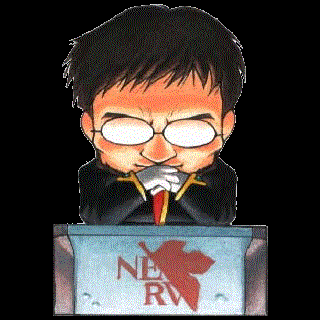Clickbaity title on the original article, but I think this is the most important point to consider from it:
After getting to 1% in approximately 2011, it took about a decade to double that to 2%. The jump from 2% to 3% took just over two years, and 3% to 4% took less than a year.
Get the picture? The Linux desktop is growing, and it’s growing fast.
Most technology adoption follows an S curve, it can often take a long time to start to get going. Linux has gradually and steadily been improving especially for games and other desktop uses while at the same time Microsoft has been making Windows worse. I feel more that this is Microsoft’s fault, they have abandoned the development of desktop Windows and the advancement of support for modern processor designs and gaming hardware. This has for the first time has let Linux catch up and in many cases exceed Windows capabilities on especially gaming which has always been a stubborn issue. Its still a problem especially in hardware support for VR and other peripherals but its the sort of thing that might sort itself out once the user base grows and companies start producing software for Linux instead.
It might not be enough, but the switching off Windows 10 is causing a change which Microsoft might really regret in a few years.
The desktop has been Microsoft’s to lose for 30 years…
I’ll hang on to 10 as long as they’ll let me, but I am never going to 11. Then it’ll be a distro for dis bro.
Sorry.
Just curious and not judging your decision in anyway, but… “What are you waiting for?”
For me, VR support. Rocking win10 IOT LTSC on my main PC until compatibility improves, but already switched to Mint on my work laptop (and likely the main PC before/during 2032)
Awesome! Mint is great, it’s my number one recommendation.
I’ve never tried vr before and I’d really like to at some point.
OpenXR/SteamVR is an amazing system, and it’s easy to buy a second hand headset and just replace the face gasket (The Valve index has them attached with a few magnets). Especially with games like VRchat, Half Life ALYX, and modded support in games like Minecraft, PCVR is pretty good right now for newbies!
Agreed! I use EOS but I have to keep a dual boot setup mostly because of VR. ALVR is extremely buggy and slow for me whereas Envision easily starts but has a -10-20FPS and might crash in 10+ people VRChat instances
Microsoft has been making Windows worse. I feel more that this is Microsoft’s fault, they have abandoned the development of desktop Windows and the advancement of support for modern processor designs and gaming hardware.
Moores law is dead since a long time except for graphic cards and GPUs. This means you can’t keep adding things to desktop software in the style of “What IBM giveth, Microsoft takes away”.
Existing development paradigms don’t add significant qualities to many-processor hardware.
Which also explains part of the AI craze. It is investment money searching for a sensible use.
Most technology adoption follows an S curve
For successful technologies. Sometimes technologies just don’t catch on, like 3d TVs, or VR or Segways. Then the curve is more up then back down to zero.
But yeah, this time might be different. Linux has more or less reached feature parity with Windows. Games run just as well or better under Linux, with only a little bit of fiddling. That alone might not be enough, but having that happen when Windows 10 is reaching end of life, and Microsoft wants you to buy new expensive hardware for the privilege of moving to Windows 11, and just as they’re adding all kinds of new ads and AI bullshit into Windows.
Personally, I’m already on Linux, so my main reason for hoping it gets more momentum is so that device manufacturers make sure their drivers work well in Linux. Full driver support and full software support for devices is the main thing that’s still a bit of a pain.
About to be 6.0000001% when my Kubuntu download finishes. I’m finally taking the dive boys, linux on main here we go.
welcome!
i use ubuntu and its a good choice, but id recommend installing gnome-software and its flatpak plugin and using that instead of the slower snaps. other than that enjoy the penguin.
KDE has its own Discover thing for downloading Flatpaks FWIW.
You still need the underlying package manager installed (it’ll prompt you to do so), and on Plasma 5.0 you also need a special integration plugin for each package manager (merged into Discover since I think Plasma 6.0).
Discover is a joy to use.
I think kubuntu was the very first distro I ever installed in a VM when trying out Linux 10 years ago. I’ve since moved on (an aging Arch install right now, which will eventually be replaced by a NixOS install whenever I get around to it), but just wanted to say that a whole new world lies at your footsteps, my friend. Enjoy it. It’s like discovering the wonder of computing for the first time.
Nice! That’s what I use. Don’t see alot of others talk about Kubuntu. I enjoy the heck out of it. It doesn’t play games all that well, but that could also be user error as well. Still, so far it’s my favorite distro. Good luck on your journey!
FWIW, Fedora with KDE is fantastic - been using that as my distro of choice (for systems I want a UI on at least) for a few years now and I love it.
Cool, welcome! I assume you’re aware that it won’t be all sunshine and rainbows from day 1, but give it time and leverage the community to solve any issues you run into. Effective bug reports and knowledge sharing make the experience better for everyone.
To me it’s worth having control over my hardware, and an OS that’s designed to work for me and not some corpo against me.
Congrats and welcome. You are a good man.
Congratulations, and welcome to the Linux world. You won’t regret it. But also don’t get scared if something doesn’t work right away!
Damn Linux becoming mainstream. How will I feel like a superior tech elite now?
Switch to BSD
Pretty sure BSD is dying, Netcraft confirmed that like 30 years ago.
That’s why we need to switch to TempleOS
Plan9 all the way!
Maybe it’s dying, but it won’t die in our lifetimes, so it’s fine.
I am actually also thinking about creating customized version of OpenBSD as a side project.
Is it any good
I only installed it once for fun in a VM but didn’t really use it. It’s different to Linux but you could get used to it. As far as I know however the hardware that it properly runs on is quite limited, mainly older stuff. So I wouldn’t recommend it as a daily driver but I would recommend to try it out.
I would definitely recommend OPNSense. The hardware support is quite good
Only use TTY
Plan 9 it is !
Not even trying the Plan B?
If they’re typing I fear it may already be too late.
Delete all browsers. Only access the web using curl.
Curl? You thunk I can’t craft my own web requests??
Piefed is actually weirdly usable in w3m.
You could use Arch, btw
I assume you mean raw? Because I’m a noob and I installed Garuda, which is Arch, and it’s been dead easy.
Everyone could use Arch! Let’s all flex together!
Guess it’s time to move to Gentoo ~ or Nix
Still rocking BeOS :)
One day Haiku will be ready
You can still use arch (btw) and be a superior tech elite to me, who just uses bazzite because i don’t want to tinker in my free time
GNU HURD.
Lots of “elite” distros to use. No need to ditch Linux.
SteamOS, Bazzite, and the Plasma DE I think are what’s driving Linux to be more popular. They are all very streamlined experiences.
I tested Gnome and KDE Plasma5 in the last year. KDE Plasma is in my opinion the first DE which is comparable with Win/MacOS. It looks modern, is pretty much feature complete and as an average user its nice to have useful apps preinstalled (calculator, libreoffice, firefox and so on), but no bloatware.
Its just a bit more customizable than windows, which is perfect and also not fiddly and a pain. It certainly has a handful of quirks, like Windows does, but you get used to them.
If I have to set up elderly relatives with a computer, I’d strongly consider a KDE Plasma Desktop
The preinstalled apps are not a feature of KDE (or Gnome, XFCE, etc.). Actually they all are structured in a very modular way where you can use or omit individual components. Firefox and LibreOffice are completely independent of it even; they merely add compatibility layers to make the integration more seamless.
What you experienced was something to attribute to the distribution you chose. They are the ones to decide which components to bundle and preinstall. That is also the reason why so many distributions exist in the first place, because different teams/devs have different visions about what the desktop should look and feel like after install.
So the preinstallation of all the KDE apps is a choice of the distro?
On both Linux Mint and Debian+Plasma I got some apps preinstalled. That I can uninstall and that they arent developed by the same people doesnt play a role. For the user they come with the OS, like Win10 preinstalls the calculator and Candy Crush
So the preinstallation of all the KDE apps is a choice of the distro?
Correct.
For the user they come with the OS
That’s my point, though. Plasma isn’t an OS. You can can have a OS that ships Plasma with Calligra instead of LibreOffice and Falkon instead of Firefox. Or neither, and instead they give you a greeter with the choice to pick your browser. Or the OS is minimal and doesn’t bundle any of them. In Arch for example you normally don’t even get Konsole or Dolphin unless you install them (or you pick the nuclear option and install _all _ KDE packages which also includes a ton of stuff you likely never need).
I never got gnome, it’s like macOS, but I never enjoyed using it even after being a Mac user.
Plasma and cinnamon are my top desktop recommendations.
Well as someone who’s been using gnome since about 3.10 I might be able to explain my view:
Before that I’ve used plasma and Unity and a whole lot of Mate but then I started using Gnome for a pretty and smooth experience right out of the Box.
Now I’ve simply been using it for so long that it’s muscle memory all the way.
I don’t agree with everything the gnome devs decide and I definitely am annoyed that I have to use extension for small things that should just be a toogle in the settings but I’ve realized some time ago that if I did switch to plasma I would use all the customizability to make it work like Gnome … so I stay on Gnome.Short question because thats what made me swap to KDE: How do you quickly open an app, without navigating through the categories with your mouse?
Now make me look stupid :D
It depends on the version of gnome/distro but typically the windows key opens a spotlight-esque search box that also has recent and commonly used apps which you can click without typing. I think some distros may change that shortcut key
I never use the “App Menu” on my laptop I don’t even have any favorites.
I hit the super button (windows key) to open the app overview and type the first few letters and hit enter.
So e.g.
SUPER fi EnterFirefox opens with just 4 key strokes in 1 secondI instinctively do that as well, on Windows, Cinnamon and Plasma and it didnt work on Gnome, Superkey opened the Startmenu but then typing didnt search. Thats what I wanted to ask, if I miss something obvious or if Gnome doesnt offer that feature out of the box.
Debian probably changed the Key for the Spotlight-like search.
I think generally macos users would feel more at home in gnome where as windows users more in kde.
Very true in my limited experience
I am very familiar/comfortable with Windows and very confused by MacOS. Yet I much prefer Gnome over Plasma.
Not to say you are wrong or anything, maybe I’m just an outlier.
That said, I’ve been using Cosmic DE for about the past month and it’s pretty great. I think I might stick with it. Gotta love all the options we have!
That’s interesting, and unexpected. Thanks for sharing.
I can’t believe I have been running python3 for simple calculations lately instead of running KCalc, lol.
Imo everything you just said about KDE is even more true of Gnome
What’s great is neither of you are wrong from your own perspectives - and both of you are free to share your message and preferences.
Apparently not without ire, unfortunately. Somehow got downvoted for what I wrote…
People HATE Gnome and I don’t get it. I’ve heard the arguments but in all practicality I have tried KDE too and then minutes into trying the complicated customization features I just wanna go back to gnome. Give me a somewhat new version of gnome and 30 minutes and I’ll have it configured how I want and it looks and runs nice. I recently spent 30 minutes trying to understand customization of the bottom bar in KDE and gave up
I upvoted you. <3 My experience was very similar but with the two swapped: After I used Linux Mint (with Cinnamon) I tried Debian, it came with Gnome.
I struggeled to find the apps (I dont know what they are called on a new OS) but I didnt find out how to search for them. Win+Type didnt search, I didnt see an obvious Spotlight feature like on apple.
Then I wanted to change some settings and couldnt change them (I dont remember what). I felt like customisation wise I’m using macOS, and thats a bad thing. So like you I reinstalled Debian with KDE after less than 1h in gnome.
Thats why we need different DEs, maybe they and their variations are more important than the huge selection of distros.
Gnome really tends to drag their feet when it comes to new features/wayland protocols to implement. I’m pretty sure they didn’t even have adaptive sync for the longest time, when even smaller wlroots projects already supported it. I don’t hate gnome though, i actually kinda dig their design, but unfortunately i can’t stand using floating window managers anymore, i only use tiling.
Yeah, I’ve heard this before. I don’t believe though, that I’ve yet been a user of those still-unsupported features though, so I haven’t noticed anything affecting me yet.
Fair enough. If it does everything you need then it’s good lol
As more people learn bazzite just works, it’s going to grow. If I hadn’t rescued my son’s windows license he would have switched.
You should rescue your son now and switch him to Linux
Tried to persuade him. He’s an adult son, so I wouldn’t force it on him.
Grandma’s using it just fine though.
SteamOS and Bazzite are certainly contributing among gamers, but there also seem to be a lot of casual users moving to Mint and pop!_os. I’ve seen quite a few people using them to extend the life of older hardware.
I’ve got Mint XFCE on two old laptops

Chaotic Good Billionaire does a solid for Linux, Windows users devastated
Gabe Marx
As a daily Linux user, this makes me VERY VERY happy!!
A long time ago when Linux was around 2-3% someone said that macOS adoption by software companies happened when it got to 5% of the marketshare.
If Linux continues down the path, we might see real support from some of the holdouts.
Before anyone says to use an alternative, sometimes there are not workable alternatives.
Linux has a problem with distribution of binaries, and companies for profit doesn’t want to share source … and packages with only binaries have some dependencies problem… although Flatpak and Snap improved this A LOT…. But then would have GLPv3 in many dependencies and you cannot ship it with a “for profit” product.
This is the biggest hurdle for Linux “for profit” market for better apps. Also many Linux users are against the paid model, preferring open source. There is a cultural limitation to break the bubble
I think SteamOS is helping a lot to break this … but still Linux desktop need to have a cultural change specially on license model or binary stability to be able to have a better app availability
This has been a big problem historically. Agreed.
But you cite the solution yourself. Flatpak is all you need for effective distribution of commercial apps. GPL has nothing to do with it. There are already commercial apps in FlatHub.
What is missing is “paid” commercial apps. We have no “take my money” App Store in Linux. I think FlatHub is working on it. Honestly, I am surprised a commercial company has not launched one yet. Well, other than Steam of course.
I’m not sure about the legal intricacies of it, but there is commercial software being distributed through flatpak on Flathub for a while now. The first example that comes to mind is Bitwig, a well-known, paid, commercial Digital Audio Workstation: https://flathub.org/apps/com.bitwig.BitwigStudio
Also, Flathub is working on offering paid apps: https://news.itsfoss.com/flathub-paid-apps/
When it gets to 7%, is that when there is more malware designed for Linux desktop ?
There is already plenty of malware targeting devs on Linux where is it’s strongest userbase.
Yeah, unfortunate to rain in the parade but GNU/Linux definitely needs some attention sooner rather than later. Plenty of design benefits, but also plenty of pitfalls from an OS sec POV.
Average users aren’t installing SELinux or Qubes so I hope no-one was actually going to reply with what Linux can do as opposed to the everyday user experience.
A few years outdated, but relevant: https://madaidans-insecurities.github.io/linux.html
but also plenty of pitfalls from an OS sec POV.
Can’t possibly be more vulnerable than Windows, the system where you can elevate yourself to highest privileges by simply clicking “Yes” on a prompt without a password, and where most users are running outdated versions of their software because they never update anything, or have a thousand background “updater” applets that are scheduled to run periodically and have the ability to install arbitrary executables from their servers.
If you run a repo-only system, where everything you install comes from the first-party distro repo, you’ll likely be fine. Just as you are on Windows or Android if you only download apps from the first-party store.
But like on Windows and Android, you’ll quickly reach the limit of what you can do with first-party store only.
Especially stuff like gaming requires non-repo/non-store stuff pretty quickly, and then you are on exactly the same turf as on Windows.
There’s no world where Windows users only use the official store. In fact, that’s why every “S” version of Windows always failed.
Exactly my point. Also on Linux you quickly get to the limits of what you can find in the first-party repos without ppas or downloading .rpm/.deb/… files. And same as on Windows, having a malware-free first-party repo/store won’t protect you from malware if you download your programs from elsewhere.
where everything you install comes from the first-party distro repo, you’ll likely be fine.
Canonical’s Snapcraft has a bad reputation for a reason. Many reasons. But compromised apps is a major one.
Can’t possibly be more vulnerable than Windows
The linked article provides many examples where security techniques lag far behind Windows. Vulnerability isn’t as simple as being ‘more vulnerable’ or ‘less vulnerable’, it’s a complex concept, and both GNU/Linux and Windows have design decisions which make each better than the other in various ways. We need to understand security in a more nuanced way than “x is better than y” if we actually want to protect ourselves from threats.
A Linux installation can be set to run root with no password or prompt. A Linux user can choose to never update their software - one could argue that Windows forced OS updates are an improvement here. The argument that the typical user has more technical understanding is a weak defense (as in, we really really really should not rely on that) and also irrelevant when we’re talking about Linux gaining a wider audience.
Yeah, but the user might need to package it first for their distro.
Jumped to Bazzite never looked back. Let’s goooo
A king once summoned a wise man who had done him a great service and said, “Name your reward.” The wise man replied, “Your Majesty, I ask for a simple thing. Give me one percent Linux desktop market share for the first square of the chessboard, two percent for the second square, four percent for the third square, and so on, doubling the amount for each of the 64 squares.” The king, thinking this was a modest request, said, “Surely you jest! Such a small reward for such a great service? Ask for gold, land, or jewels instead.” But the wise man insisted, and the king agreed. The king ordered his treasurer to calculate the total. Starting with 1% for the first square, 2% for the second, 4% for the third, 8% for the fourth… by the time they reached the tenth square, they needed 512% of the desktop market. The treasurer, pale with realization, informed the king that by the 64th square, they would need more market share than could possibly exist in the entire universe of computing devices. The king then understood that what seemed like a humble request was actually impossible to fulfill, and he gained a new respect for the power of exponential growth.
It already goes over 100% market share after only 8 squares. 512% seems like a weird place to stop? How can you have more than 100% market share?
In the original it also supposedly amounts to more grain then there is in the kingdom.
Not supposedly, but mathematically. Even if the grateful king ruled the entire planet and the great warrior were willing to settle for grains the size of a single atom, the king would be unable to pay in full; the total of grains on the whole chessboard would be 2^64 grains, but there are only 2^50 atoms on Earth.
Ooh, so I am thinking we make a black hole seeded with nothing but rice.
Theoretically you could make a black hole with a single grain of rice. You just have to figure out how to crush it down enough.
It also wouldn’t last very long due to Hawking radiation, but that’s another thing.
Fun fact: while Hawking radiation will eventually evaporate away almost all of a black hole’s mass, the black hole will eventually become small enough that physicists think the system would stabilize (because it would have so little mass that it would actually have to reduce entropy in the system in order to evaporate any further). It would then just wander the universe, interacting with gravity in a tiny way, but being utterly invisible to any other means of detection we have. Add to that the fact that there were likely a huge number of black holes in the early universe, which was long enough ago for sufficiently-small black holes to have evaporated to this stable state, and you come up with a plausible explanation…for dark matter.
Obviously this is just more theory, but I think I’ve heard that the minimum size for a black hole is about on the order of a big mountain’s mass; something to do with the amount you can increase density before you’re actually forced to compress electron clouds down toward the proton.
I think that happens in any black hole formation. At least that’s my understanding of how neutron stars are formed. The electrons get forced into the nucleus and turn the protons into neutrons. From there it’s quark gluon plasma then a black hole.
In any case, I have no idea how either a grain of rice or a mountain could be made to do such a thing.
Yeah, I appreciate the reference, it’s just that my brain got stuck on the comparison breaking due to using percentage instead of some absolute count.
Better start populating some more planets. See you on Manjaro Delta Prime.
Wow it was 5% yesterday
at this point linux will have more than 100% market share by next week!!!
They used a different data source for this one and mentioned why they preferred this one over the one from the day before.
So what you’re saying is that if we just keep switching to different data sources, we could get above 50% in less than two months!
Invest now!
And even at 50%, Nvidia still won’t release Linux drivers.
I read a similarly sensationalist headline with 4% two months ago and 5% yesterday. What’s up with the headline makers?
Linux is gaining market share quickly as the Windows 10 EOL rapidly approaches. There is still a massive amount of perfectly great hardware out there that isn’t officially supported by Windows 11, and only 3 months until Windows 10 reaches EOL.
According to more realistic data, e.g. https://gs.statcounter.com/os-market-share/desktop/worldwide/#monthly-202406-202506 the market share has been around 4% for the last year, even slightly declining in the meantime.
But that doesn’t make for nice, sensationalist headline stoked by wishful thinking.
Sorry to say, Linux isn’t going mainstream anytime soon and by and large the end of Win10 just means that the comparatively small group of users still running 5+ years old hardware will just buy a new PC or keep using their outdated OS.
In fact, if you combine the market share of outdated Windows versions (XP-8.1) you get a market share very close to the market share of Linux.
As much as we all would love it if the Linux market share goes to 50% in fall, it’s not going to happen.
The main issues with Linux adoption (it’s not preinstalled and most people have no idea which OS they are using and really can’t be bothered to reinstall) are just as present now as they were for the last 30 years.
All it takes is momentum. It’s a chicken-and-egg problem, and I think it’s gaining momentum because of Valve. Gaming was always the one thing stopping people from checking out Linux.
Now, however, more and more people are trying it out. More tech YouTubers are trying Linux, which means more exposure. Distros are becoming more refined. KDE is much better than it used to be because of Valve. All in all, there’s true momentum building.
In due time, Linux will be preinstalled on computers and laptops, and because of this, more people will contribute to Linux. People are fed up with the bloat and heavy AI push of Windows 11.
Bursting the Linux hype bubble on Lemmy, that’s courage!
And even though I have seen that the average price of machines with Linux preinstalled may be close to some machines with Windows, I would guess that most people are going to go with the latter. Easier access to purchase one, familiarity etc.
This. Personally, I’m scrambling to get all my shit sorted out on my desktop before switching over
Same here!
Agreed. I think we’re still going to see a LOT of growth in Linux market share by the end of this year. I wouldn’t be surprised if it’s 7%-8% by then.
The avalanche has started. It is too late for the pebbles to vote.
Windows’ market share is being nibbled to death by cats.
Nah it’s just being replaced with phones.
Low tech users used to have cheap windows machines, now they have phones and tablets.
Zathras, holding up a thumb drive with a Windows Installer ISO:
“No, never use this.”
New distro: ZathrOS
Error message: This why ZathrOS not have nice things.
Only allowed to use if your hostname is Epsilon3. And instead of systemd you get TheGreatMachine.

Does it count that I have four computers running Linux because I can’t help myself?
These stats are actually just tracking the number of linux desktops you have
At a few work computers I once changed the user agent to say Firefox and Linux some years ago.
But it is only in the US and not globally. Anyway, competition is good.
wtf I love Norway now? Sweden is at like 2%.
But Norway’s Linux spiked up to almost 30% in July 2024 as well. So I don’t really trust these sites. My guess is that it’s due to Tesla’s web browser or something? Tesla is the most popular electric car brand in Norway: 77k Model Y and 50k Model 3 are registered, and the only model with higher numbers is the Nissan Leaf with 81k, but that’ll be taken over very shortly (so far in 2025, there have been over 11k Model Y registrations, with the next runner-up being the Toyota BZ4X with 4,6k)
Possibly, but it does explicitly state desktop operating systems and I don’t know if Tesla’s would count towards that.
Wow. Impressive. And in Sweden we are only 2% or something like that. Why so many in Norway. How did you do it?
9% in India. But this is down from a peak of ~15% late last year when the govt was worried about US sanctions and was pushing for Linux adoption.
Why did go back to 9%? They all forgot about that theat or what?
-
There’s an uptick in ‘Unknown’ (currently at 26%).
-
Linux adoption might have slowed down because India - US relations have improved since then, because Trump can be distracted by promising him trade deals. Of course the deal he wants (giving US agri companies access to the Indian market) will face opposition from farmers’ unions, so I’m not sure what the govt’s long-term plan is.
One good thing is that when a govt dept switches to Linux, it sort of sticks. And govt contracts are very profitable, so we’ll likely see greater interest from both hardware and software companies.
-






























